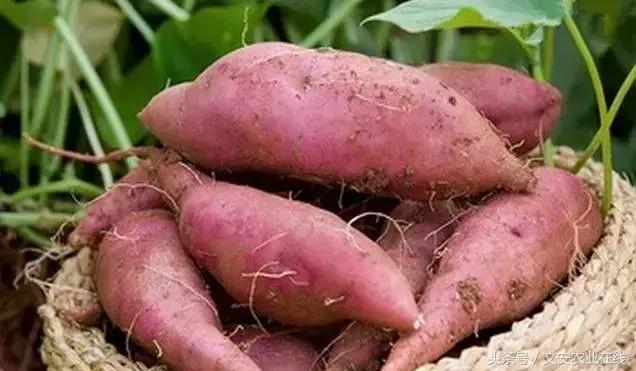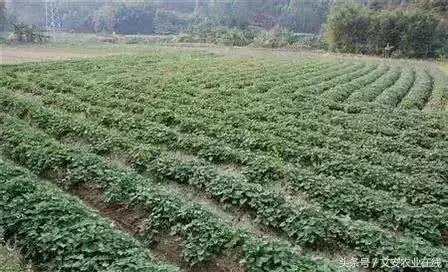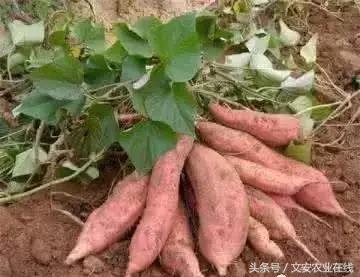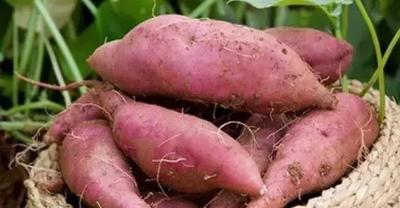Planting techniques of sweet potato
Sweet potato was originally named sweet potato, also known as red taro, sweet potato, sweet potato, rice, potato, sweet potato (north), sweet potato, red potato, pillow potato, sweet potato, white taro, sweet potato, etc. How to grow sweet potatoes? What are the sweet potato planting methods? So let's take a look at the planting methods of sweet potatoes carefully recommended by Xiaobian for everyone, hoping to help you.

Sweet potato cultivation methods:
Sweet potato (English: sweet potato) formerly known as sweet potato (scientific name: Ipomoea batatas (L.) Lam.),Northeast commonly known as sweet potato (Hubei dialect sweet potato, red taro, sweet potato, anise taro, purple potato, sweet potato, red potato, golden potato, etc., also known as sweet potato, white taro, etc. Sweet potato belongs to tubulosa order, annual herb of convolvulaceae, more than 2 meters long, lying obliquely on the ground, leaves are usually broadly ovate, 4-13 cm long, 3-13 cm wide, corolla pink, white, lilac or purple, bell-shaped or funnel-shaped, 3-4 cm long, capsule ovate or oblate, with false septum, divided into 4 rooms, with underground root tuber, root tuber spindle shape, outer skin khaki or purple. (Sweet potato is a plant with six organs: roots. Stem. foliage. flowers. Fruit. Roots in seeds)
Sweet potato root is rich in protein, starch, pectin, cellulose, amino acids, vitamins and a variety of minerals, sugar 1.5%-5%.
Sweet potato root has active ingredients, anti-cancer, heart protection, prevention of emphysema, diabetes, weight loss, beauty and other effects, has a "longevity food" reputation. In addition, in addition to food, root tuber can also be sugar and wine, alcohol, starch, pectin, etc., starch can be made into vermicelli and vermicelli, and delicious dishes can be made.

Sweet potato growth habits
growth stages
The growth period of spring sweet potato is 160-200 days, and summer sweet potato is about 110-120 days. According to the growth characteristics of red spring in the field and its relationship with climatic conditions, it can be divided into three growth periods:
(i) Early stage (from seedling planting to pot closure). Spring sweet potato lasts about 60-70 days, summer sweet potato about 40 days. The growth of stem and leaf was slow and the root system was fast in this period, which was dominated by fiber roots.
(2) middle stage (from pot closure to peak growth of stems and leaves). Spring potatoes last about 50 days and summer potatoes about 30 days. The root tubers expanded slowly and the stems and leaves grew fast in this period, which was mainly the period of stem and leaves growth.
(3) late stage (from stem and leaf decline to harvest). Spring sweet potato after late August, summer sweet potato after early September. This stage is the main stage of tuber swelling.
Sweet potato growing environment
(i) Temperature. Sweet potato likes temperature and is afraid of cold. When planting seedlings, 5- 10cm, the ground temperature is about 10℃, and it does not take root. It takes 5 days to take root at 15℃. It takes 3 days to take root at 17-18℃. It takes only one day to take root at 27-30℃.
At 25-28℃, stem and leaf grew fast, and above 30℃, stem and leaf grew faster, but tuber expanded slowly. Above 38℃, respiration consumption is more, stem and leaf growth is slow, stem and leaf growth is also fast below 20℃, growth stops at 15℃, and if the duration is too long below 10℃, frost occurs, stem and leaf die.
The higher the ground temperature was between 21 ℃ and 29℃, the faster the tuber formation, the more the tuber number, but the smaller the tuber. 22-24℃ was favorable for root tuber formation. 20-25℃ was the most suitable temperature for root tuber expansion, lower than 20℃ or higher than 30℃, some varieties stopped expansion below 18℃, lower than 10℃ were susceptible to chilling damage, root tuber was frozen at-2℃. The larger temperature difference between day and night during tuber expansion was beneficial to tuber expansion and nutrient accumulation.
(ii) Light. Sweet potato likes light, in the case of sufficient light, thick leaf color, leaf age, stem vine stout, stem conduction tissue developed, high yield. If the light is insufficient, the leaf color is yellow, the leaves are more, the leaf age is short, the stem is slender, the conducting tissue is underdeveloped, the organic nutrition formed by assimilation is less transported to the root tuber, and the yield is low.
Daily light exposure time is beneficial to the growth of stems and leaves, stems and vines become longer, and the number of branches increases. 12.5-13 hours of light per day is suitable for root tuber expansion. 8-9 hours of light per day is beneficial to bud emergence and flowering, but not suitable for root tuber expansion.
(iii) Water. Sweet potato is a drought-tolerant crop, but too much water is not conducive to yield. Sweet potato is afraid of submergence, especially after tuber setting, submergence has great influence on yield. Soil moisture caused by the growth rate inside and outside the root is not balanced, often appear cracked skin phenomenon. In short, sweet potatoes are afraid of both waterlogging and drought. The masses say,"dry wood roots grow, wet fibrous roots grow, and dry roots grow." In order to obtain high yield of sweet potato, proper irrigation should be carried out according to specific conditions, drainage should be carried out in time, and intertillage should be strengthened to preserve moisture in dry land.
(iv) Nutrients. Sweet potato has strong ability to absorb fertilizer and bear barren, but it must apply sufficient fertilizer to high yield. In addition to nitrogen, phosphorus and potassium, sulfur, iron, magnesium and calcium also play an important role. Among the three elements, sweet potato required the most potassium, followed by nitrogen and phosphorus. According to analysis, every 1000 jin sweet potato contains nitrogen 3.5 jin, phosphorus 1.75 jin, potassium 5.6 jin. Therefore, increasing potassium fertilizer and applying appropriate nitrogen and phosphorus fertilizer in due time have significant yield increase effect.
(v) Soil. It is better to use sandy loam and sandy soil with deep soil layer, rich organic matter, loose, ventilated and good drainage performance. When the soil is sticky and heavy, the tuber skin color is not good, rough, the potato shape is not neat, the yield is low, and it is not resistant to storage. However, sandy loam soil and sandy soil generally have low fertility and poor water retention capacity. Therefore, soil fertility should be gradually improved by fertilization to obtain high yield. Sweet potato is more resistant to acid and alkali, and the pH range is about 4.5-8.5, but 5.2-6.7 is appropriate. When the soil salt content exceeds 0.2%, it is not suitable to plant sweet potato.

Cultivation techniques of sweet potato
seedling raising method
Sweet potato seedlings should be planted 2 months before transplanting, that is, spring sweet potato seedlings in late January, autumn sweet potato seedlings in mid-late June, early winter sweet potato seedlings in mid-August. Can adopt one-time seedling, also can divide times breed.
Seed selection, seedling purification and rejuvenation are carried out every year. In order to select seeds from fields without virus disease and scab disease and with consistent varieties, medium seed potatoes with long, uniform shape, no furrow, straight and smooth skin, no disease spots and scars should be selected as seeds. Before planting, seed potatoes should be soaked in 1.0% copper sulfate solution or 2% sodium hydroxide solution for 5~10min, or they can be soaked in Bt, Beauveria bassiana and other biological agents allowed for organic production for 2h. It is best to reproduce virus-free seedlings under insect-free conditions in gauze greenhouses.
Seedbed base fertilizer to apply enough, generally every 667 square meters of organic fertilizer from the retting system 500~1000kg, mineral potassium magnesium fertilizer 50kg. Before planting, disinfect the seedbed with sulfur mixture or lime or disinfect it in a closed shed.
seedling management
During sweet potato seedling period, topdressing shall be timely applied according to seedling situation, and biological organic fertilizer (total NPK nutrient content ≥6%, organic matter content ≥40%) approved by organic certification or approved by organic certification organization shall be used as fertilizer. The total topdressing amount in seedling stage is generally 250kg per 667 square meters. At the first "red bud" stage, thin fertilizer is generally applied; when the seedling height is 10~13cm, the second topdressing can be carried out. After each fertilization, the seedlings should be washed with clean water to prevent the fertilizer from adhering to the seedlings and causing the phenomenon of burning.
Cultivation can be divided into 2~3 times, seedling height of about 10cm, the first time can be cultivated, every 7 days for the second time, a total of 3~ 5 cm. Cultivate soil best with fertile loose fine soil mixed coke mud or decomposed compost, evenly scattered into the seedbed. Cultivation can be combined with liquid fertilizer application, so that soil and seedling base are closely combined to facilitate early development and multiple new roots.
After planting, Bt and other organic production permitted biological agents and 300 times tea bran water were sprayed once every 15 days, plant ash was sprayed once, and sex hormone traps were placed around the seedbed or outside the nursery shed.
Seedbed management should also pay attention to heat preservation, moisture, ventilation and other measures, mainly temperature. Before emergence, cover the straw curtain at night and keep the bed temperature at 25~35℃. After emergence, the temperature should be controlled at 20~25℃ to prevent high temperature burning seedlings. If the temperature in the film exceeds 30℃, ventilation and heat dissipation should be carried out in time to prevent burning seedlings. Keep warm when cold wave comes.
Seed potatoes are generally not watered before emergence to facilitate high temperature germination, disease prevention and emergence. If the seedbed is too dry, spray water on the seedbed with a sprayer. After emergence, pay attention to the seedling bed humidity. When the seedling bed is white, water it in time, moisten the bed soil and sprinkle dilute fertilizer water to promote the growth of potato seedlings; when the seedling bed is too wet, remove the film in time for ventilation.
fertilizer and water management
The requirement of sweet potato for nitrogen, phosphorus and potassium varied with different growth stages. The absorption of nitrogen fertilizer was more in stem and leaf growth stage, less in root swelling stage; phosphorus fertilizer was less in stem and leaf growth middle stage, more in root swelling stage; potassium fertilizer was more than nitrogen and phosphorus from planting to harvest, especially in root swelling stage. Therefore, fertilization of sweet potato should be carried out around this characteristic, N∶P∶K=5:6:20. It is better to adopt soil testing and formula fertilization technology.
Sweet potato organic planting is prohibited from applying any chemical fertilizer, mainly base fertilizer application, general base fertilizer dosage accounts for 60%~80% of the total fertilizer amount, base fertilizer combined with land preparation ridge application.
After the seedlings are transplanted, biogas slurry or fully decomposed thin manure water is applied once in combination with supplementary seedlings as seedling fertilizer. The second time was applied at the tuber setting stage, i.e. 60 days after planting in spring and autumn, and 70 days after planting in winter. Potash fertilizer is mainly potassium fertilizer, and 500kg of self-made organic fertilizer (or organic certified organic fertilizer), 250kg of plant ash or 25kg of mineral potassium magnesium fertilizer are generally applied per 667 square meters. The application method is generally to break both sides of the ridge with a plow, or to open a small furrow at the waist of the ridge with a small hoe, and then mix the fertilizer and probiotics for strip application. After application, water should be carried out once to promote its fertilizer efficiency as soon as possible. At the same time, fertilization can be combined with artificial weeding for soil cultivation.
Sweet potato in the planting of fixed seedling water, 30~40 days after planting, began to branch, trailing vines, water demand increased, if drought, to timely watering, can take furrow irrigation, but irrigation should not exceed 1/2 ridge height. On the whole, water management should master the basic moisture of soil. In case of rain should be timely drainage, in case of ponding caused by excessive growth of potato seedlings, there is only long firewood roots do not bear potato phenomenon.
Common knowledge of sweet potato pests
Main diseases: virus disease, leaf spot disease, scab disease, sweet potato plague, sweet potato vine cut disease, sweet potato soft rot, etc.
Disease control methods
First, virus-free seedlings are adopted to disinfect seedlings; secondly, chemical control is carried out according to different diseases.
Control and prevention of physiological diseases: due to factors such as soil deficiency, physiological deficiency, and poor environment (excessive dryness, excessive humidity, sunburn, high temperature, and low temperature), various physiological diseases such as deficiency, sunburn, aging, weakness, and wilting are caused.
Control methods: select resistant varieties or insensitive varieties; select robust varieties with strong growth potential; water properly to keep the surface and plants dry; maintain appropriate density; keep rotation of planting plots to reduce occurrence.
For non-infectious diseases, sulfur and copper preparations are used to control them. For bacterial diseases, such as soft rot, appropriate watering and watering, so that the surface, plants to keep dry. Fungal diseases, such as downy mildew, rust and other soil-borne diseases, can be controlled by mulching and drip irrigation to keep the environment dry.
Viral diseases, controlled by aphids.
main pests
Stem borer, hawkmoth, leaf roller, leaf beetle, small beetle, cutworm, litura, aphid and whitefly, etc.
Rotation. Paddy fields are rotated by paddy and drought, planting rice in early crop and sweet potato in autumn or rice in late crop and sweet potato in winter; or planting aquatic vegetables in spring and summer and sweet potato in autumn and winter.
The method of tissue culture virus-free seedling was adopted.
Light kills insects. Every 20000 square meters installed a frequency vibration trap lamp.
Integrated control measures for underground pests such as small elephant beetle, cutworm, mole cricket, beetle and leaf beetle. 500-fold probiotic solution was sprayed every 15 days after planting; Beauveria bassiana or tobacco leaf (tobacco stem) water was sprayed once 2~3 months after planting; the spraying time should be staggered for 15 days; 15~20 sex attractant traps were set every 667 square meters.
Stem borer control. Azadirachtin or rotenone was sprayed once 20 days after planting to control sweet potato stem borer, once every 10 days, and continuously sprayed 2~3 times.
Longchi Agricultural Materials Nongji Service Center
- Prev

Efficient management of fig planting
Whenever the flowers are in full bloom, we can see a colorful scene, but there is a kind of plant that hides the flowers deeply in the fruit.
- Next

Planting method of Catharanthus roseus in pot
Catharanthus roseus is also known as five-petal plum, is a very special flower, it can self-secrete a substance to prevent pests, so basically the whole growth period Catharanthus roseus.
Related
- Fuxing push coffee new agricultural production and marketing class: lack of small-scale processing plants
- Jujube rice field leisure farm deep ploughing Yilan for five years to create a space for organic food and play
- Nongyu Farm-A trial of organic papaya for brave women with advanced technology
- Four points for attention in the prevention and control of diseases and insect pests of edible fungi
- How to add nutrient solution to Edible Fungi
- Is there any good way to control edible fungus mites?
- Open Inoculation Technology of Edible Fungi
- Is there any clever way to use fertilizer for edible fungus in winter?
- What agents are used to kill the pathogens of edible fungi in the mushroom shed?
- Rapid drying of Edible Fungi

